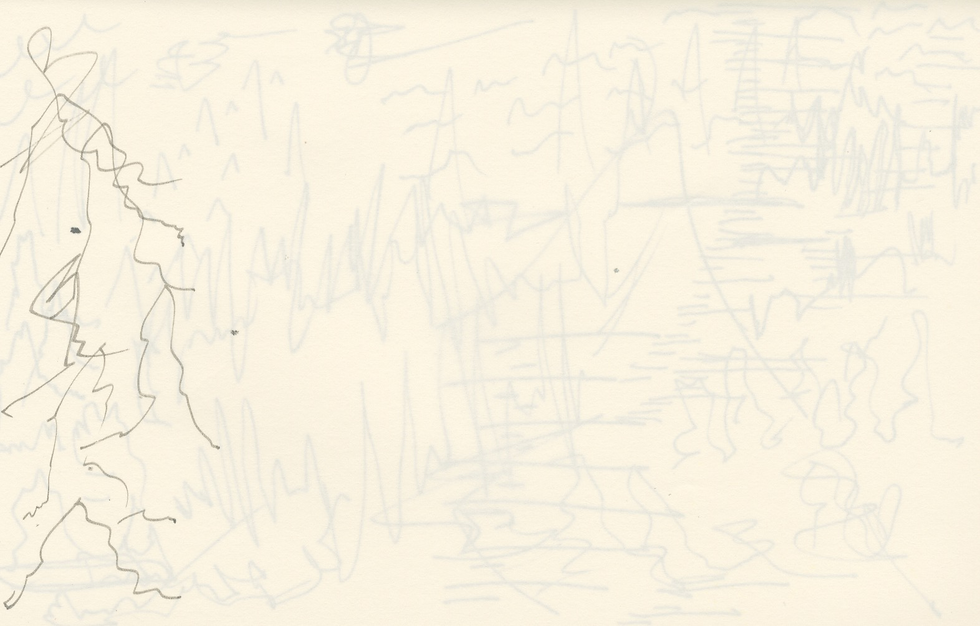Sound Maps: Tracking Sounds of the Landscape.
- alextheman156
- Apr 13, 2018
- 1 min read



"Sound art takes its cue from Cage's assertion to listen to all sounds, natural and man-made, and in doing so eventually shifted the stage to the environment itself rather than the concert hall." - Sound Art: Beyond Music, Between Categories. Pages 123 - 124.
Over the easter holidays I spent a large majority of my time in the garden at my family home, the warm spring weather invited many birds into the suburban landscape, and in turn, their varied birdsongs. I decided to create some "sonograms" (song maps), in an attempt to visualise the calls of these birds as they moved throughout the garden. Each mark is relative to the location of the sound, an experimental representation of its overall activity, texture and pitch as it travelled throughout the landscape.
The abundance of bird calls in similar locations resulted in overlapping line and form, an abstract layering of sounds. I closed my eyes as I listened to the sounds, a meditative process that I decided to implement after researching John Cage, inspired by his utilisation of random chance and inter-determinacy in his music scores. This approach also enabled me to remain unbiased, unable to see the marks being made and alter them if I didn't appreciate them. Natural, unaltered drawings to accompany the natural, "readymade" sounds of the landscape.

Comments